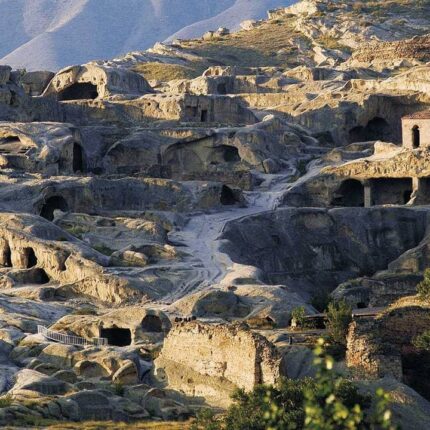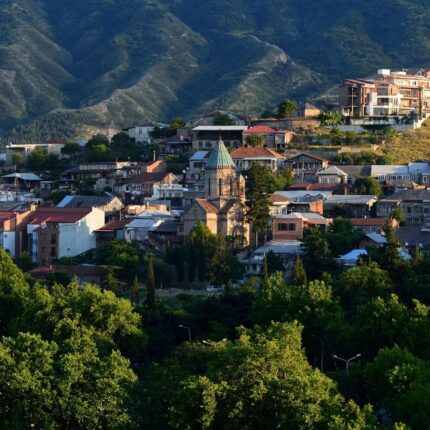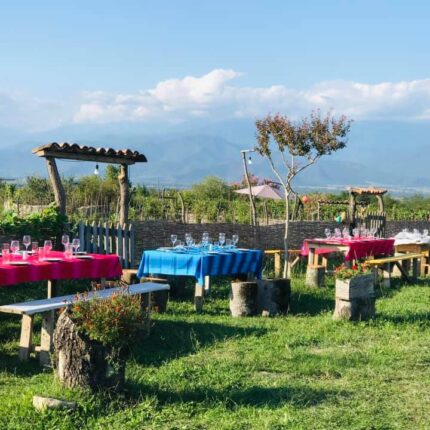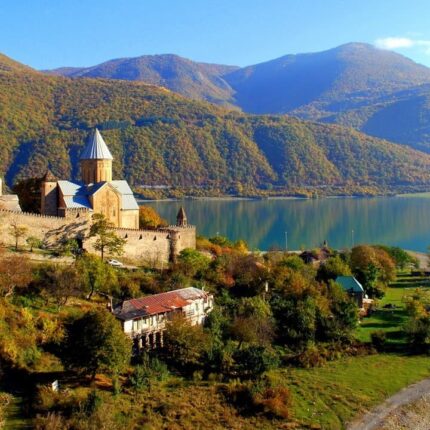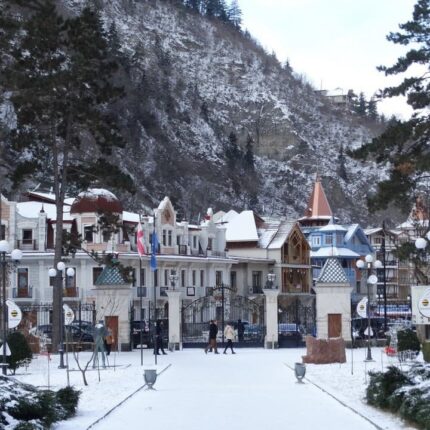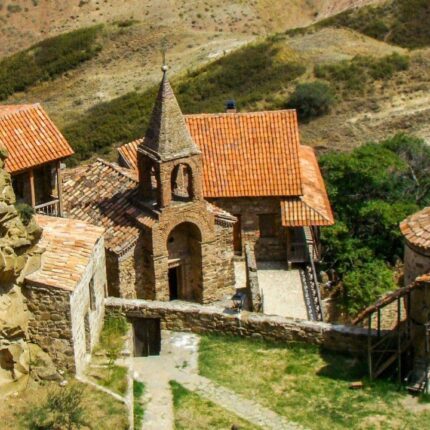The Tbilisi Metro is an underground rapid transit subway system that covers 27.3 kilometers with 23 stations on 2 lines. Like most ex-Soviet Union countries’ Metros, they’re very deep and visually interesting, with a checkered history of many stages of growth and decline.
All of the stations in Tbilisi are intricate and with their own complicated history. Without getting too in-depth on each station, we will instead focus on the broader history of the Tbilisi Metro system.
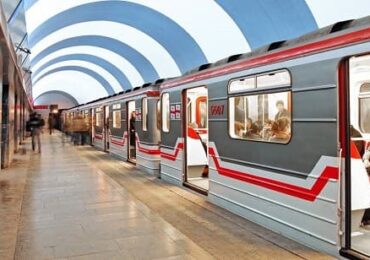
History:
Though construction began in 1952, the first and only Metro in Georgia opened in Tbilisi in 1966. Back then, one of the many the criteria for building a subway was for the population to be over 1 million, but this wasn’t the case in Tbilisi. On the contrary, it was the only city in the USSR when the construction began before the population was even close to a million. This was mostly because Tbilisi was one of the most important cities in the Soviet Union, and as a result, the Tbilisi Metro was one of the first four subways constructed in the USSR, after Moscow, St. Petersburg and Kiev.
Most of the important change to the Metro, though, was during the 1990s. Most of the station names changedand due to financial difficulties and the instability that came with the collapse of the Soviet Union, the Tbilisi Metro had problems operating properly. Sometimes, it was not working altogether because of a lack of electricity.
Because the Metro was so underfunded, it had difficulties in terms of infrastructure, operations and extensions. It became particularly notorious for pick-pocketing, mugging and other crimes during the early- to mid-1990s.
After this difficult start, it started to come around again from the 2000s. After security and administrative reforms in 2004-2005, crime decreased drastically, and other services also improved.
The persent government is investing heavily in the Tbilisi Metro system with the hopes to make it a more prestigious public transportation system, and bring it up to European subway standards. In 2006, the allocated budget for this project was 16 million GEL.
Though this project has been somewhat slow, the Metro is still improving. In 2017, the new Vazha-Pshavela station opened, which had been on hold from 2015. There are further plans to improve the whole subway system.
What to expect:
With some of the oldest Soviet-era stations, the Metro might seem rough around the edges, but it is actually really easy to navigate.
The moment you step on the escalator, the station feels old, but huge. The time spent going down and up might seem a little lengthy, but it’s a good way to take in the station and understand what it’s really like.
As for the actual subway, the carriages can be full sometimes, but there’s usually space to sit down and they’re safe as well. Announcements are made in Georgian first, and then in English.
General info
The Metro is open from 6am to midnight every day.
The cost for one ticket is 50 tetri, and for those who travel regularly, you can buy a Metromoney card, which allows you to pay for the bus and marshrutka (minibus) as well. You can pay with an Express Card (bought at any Bank of Georgia).
The trains usually operate within 2-6 minutes of each other.
How to get there:
- The list of all Metro stations in Tbilisi are as follows: Varketili, Samgori, Isani, 300 Aragveli, Avlabari, Freedom Square, Rustaveli, Marjanishvili, Station Square I, Nadzaladevi, Gotsiridze, Didube, Ghrmaghele, Guramishvili, Sarajishvili, Akhmetelis Theater, for the Akhmeteli-Varketili Line.
- And the following for the Saburtalo Line: Station Square 2, Tsereteli, Technical University, Medical University, Delisi, Vazha-Pshavela, State University.
- In total, there are 23 stations, and all of them are easy to find, and marked on Google Maps.

